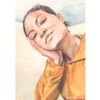Acrylic Markers & a No-Mix Palette
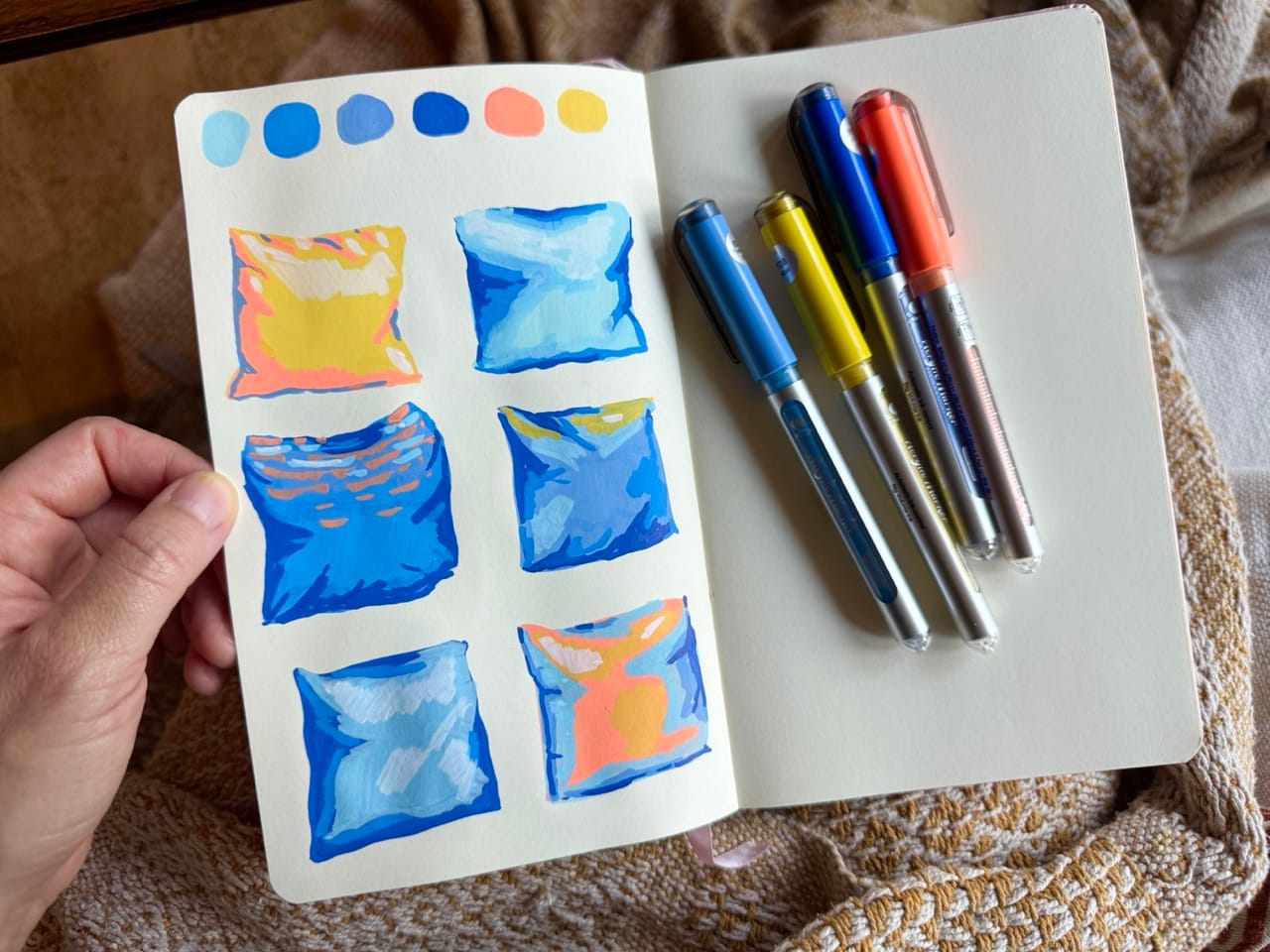
This summer I bought some student grade acrylic markers with brush tips. I was sick and wanting an easy way to do something painty from bed.
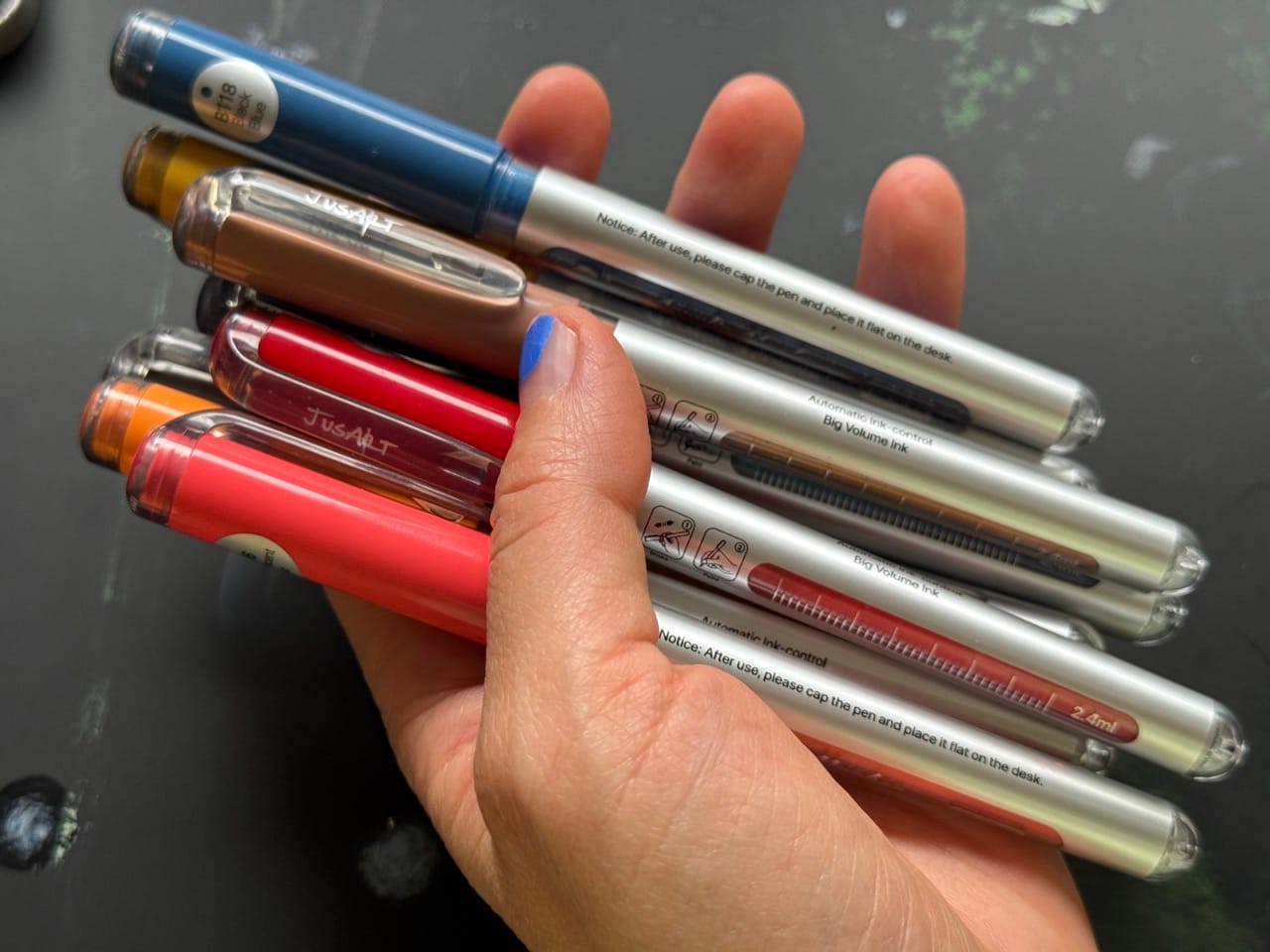
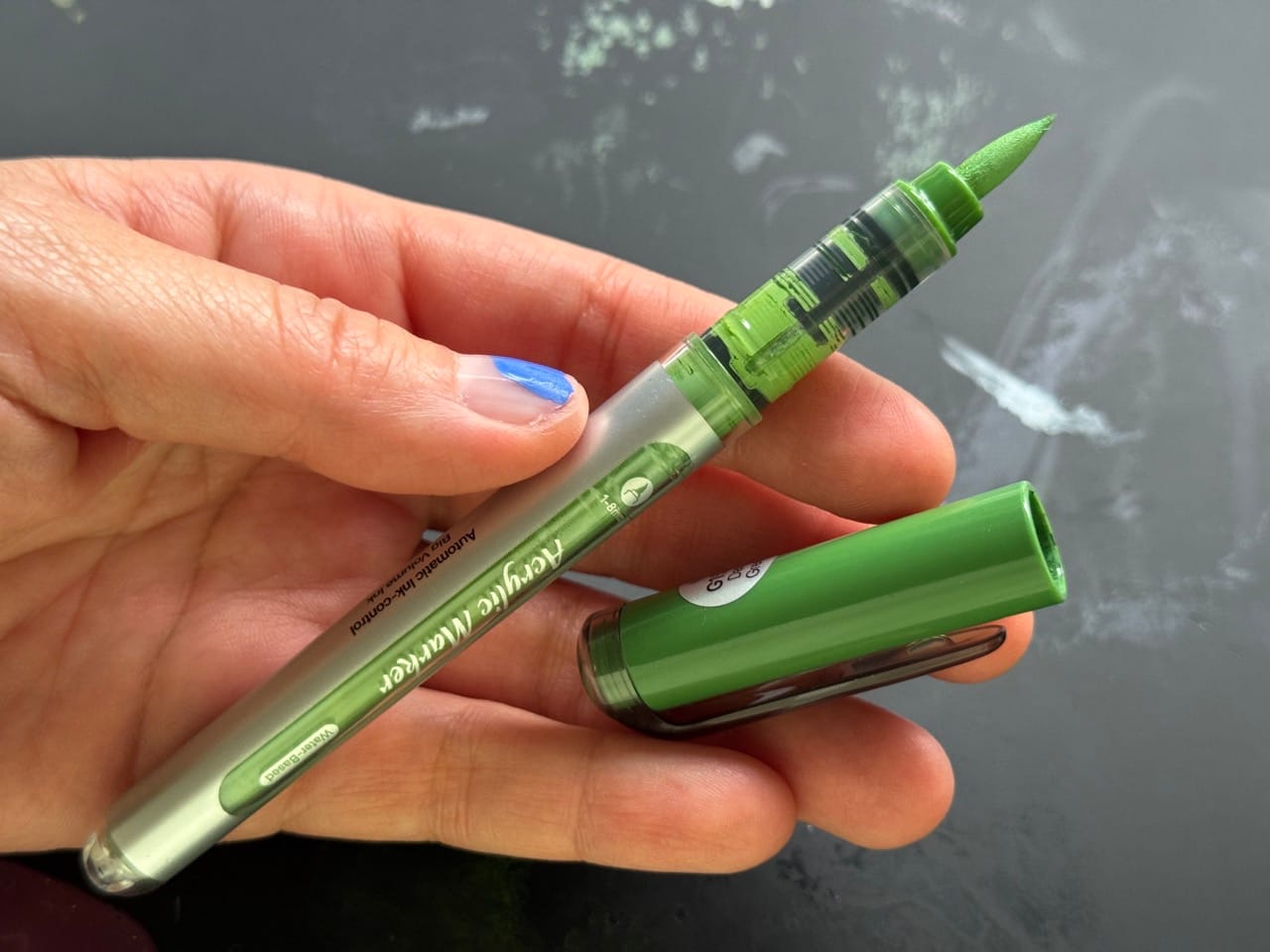
I had a handful of professional quality acrylic markers already – Poscas mostly, and some by Montana. They're quite a bit more expensive (Poscas run approximately $15 for a set of 8, where as these student grade ones were about $28 for 48), and only come with firm, round or chisel felt nibs. These tips tend to fray if you use them on textured paper, or tear up the paper if it's fragile. They also require a pumping action to get the ink flowing, and sometimes have issues with bleeding everywhere or drying up prematurely.
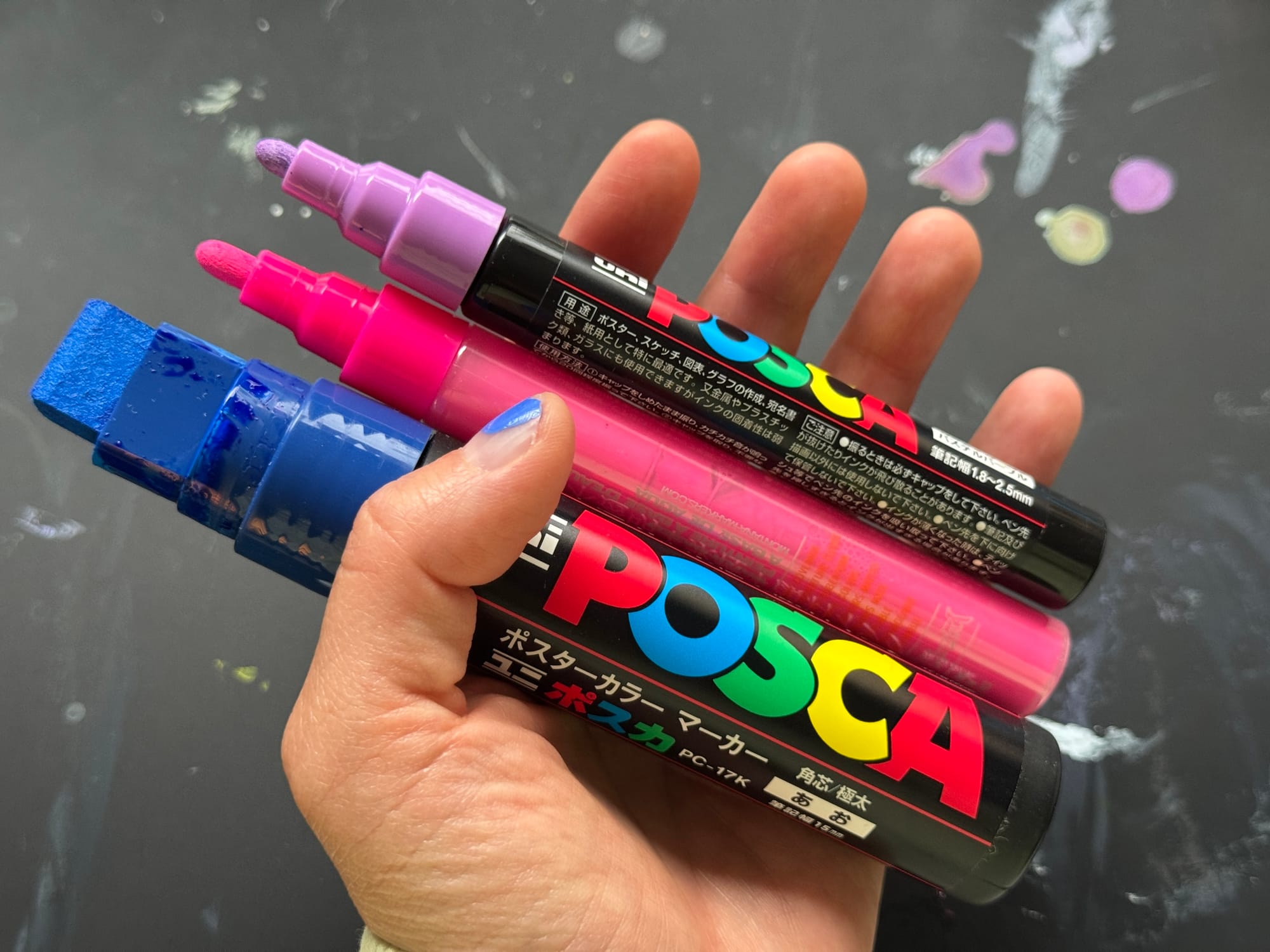
I was interested the brush tip ones I was seeing folks playing with online, which seemed to have good flow and the ability to move flexibly over various textures of paper.
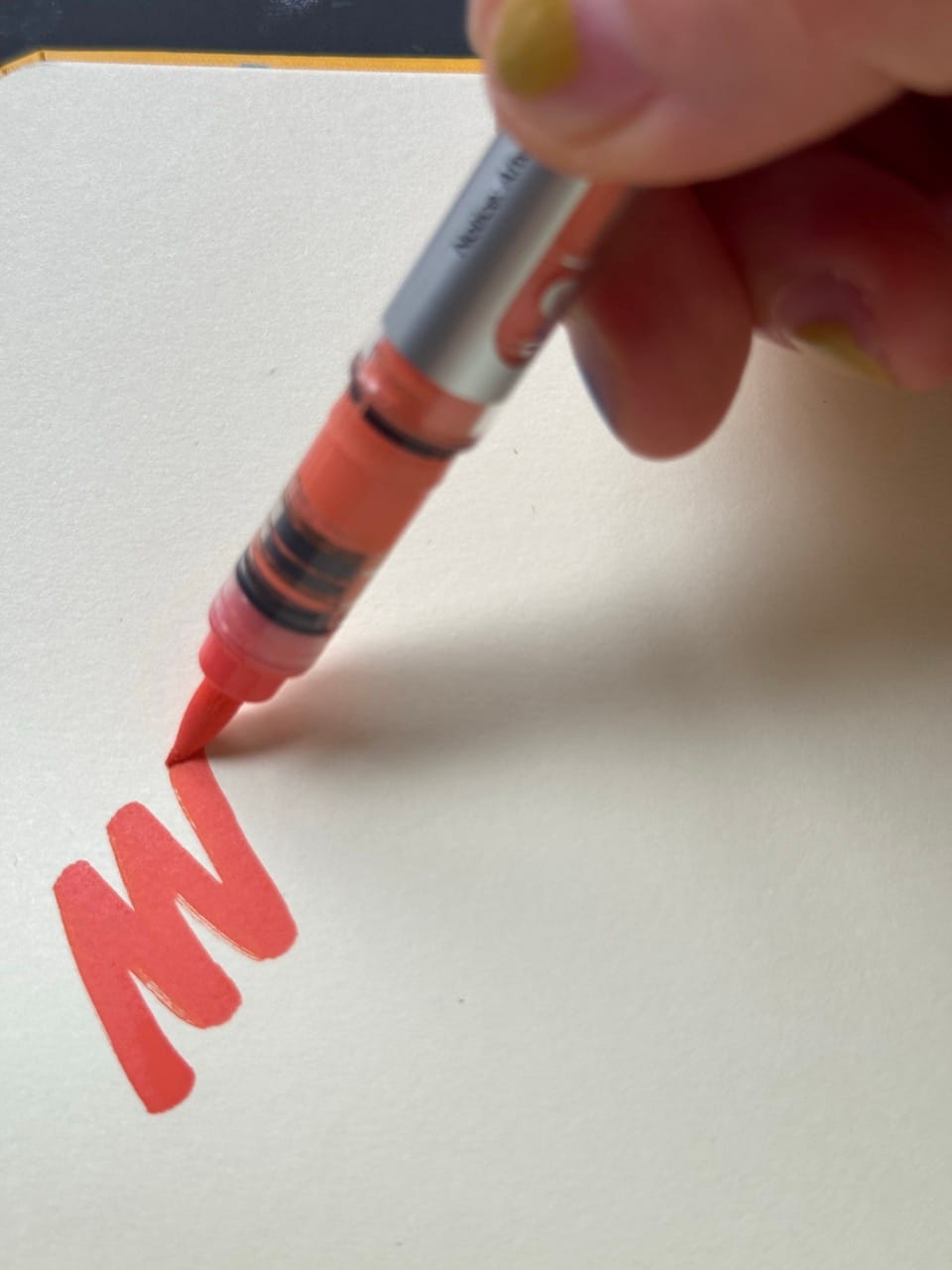
And yep - these are very fun to use! They are affordable, and come with no promises for lightfastness or permanence. But for sketchbook work and art practice, they're a total delight.
Broad range palettes
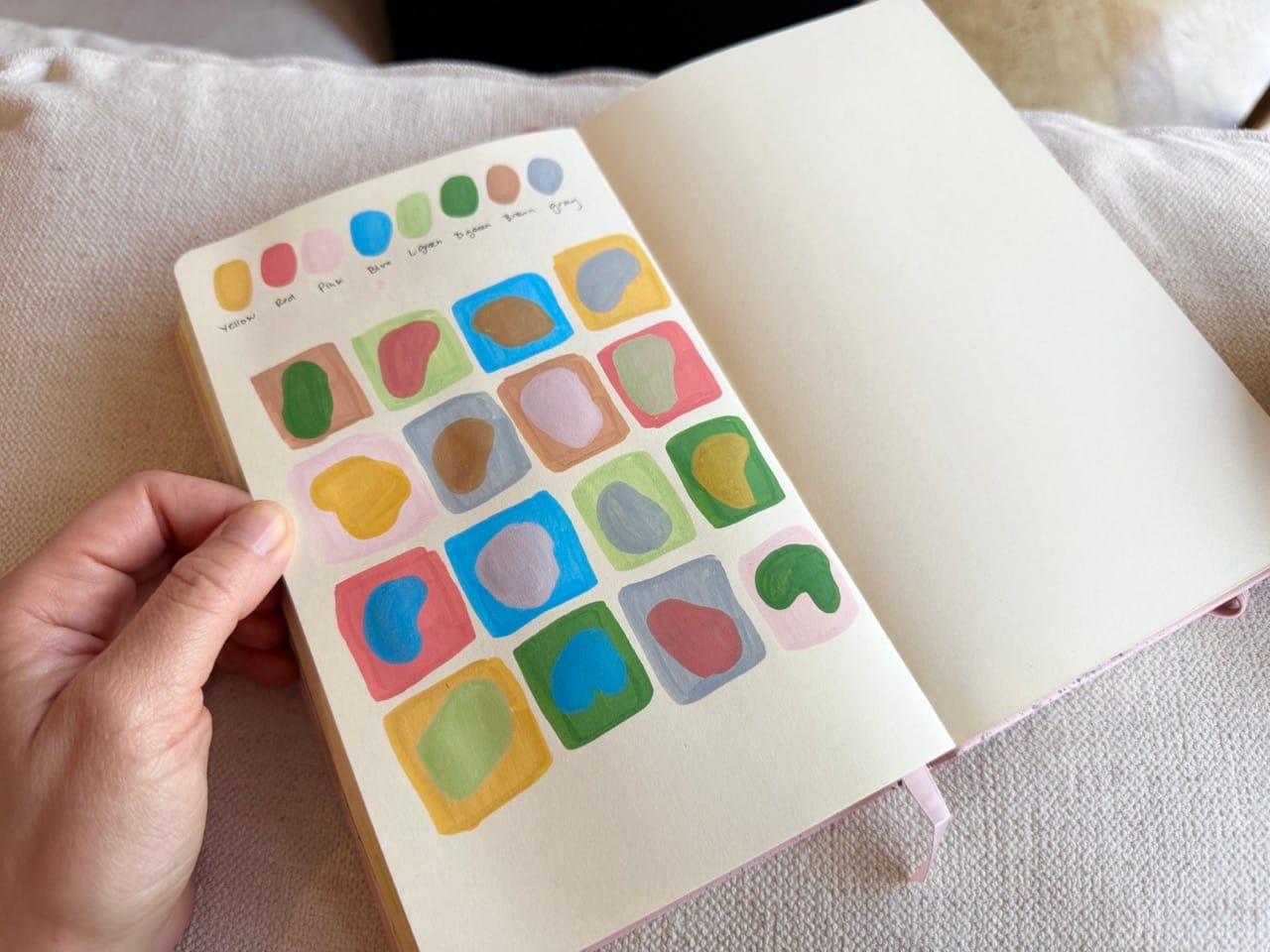
Working with markers and other generally non-mixing drawing sticks is also a great way to try out a limited, non-mixing palette. And if you land a small set of colors you keep coming back to, you might even discover your own core palette.
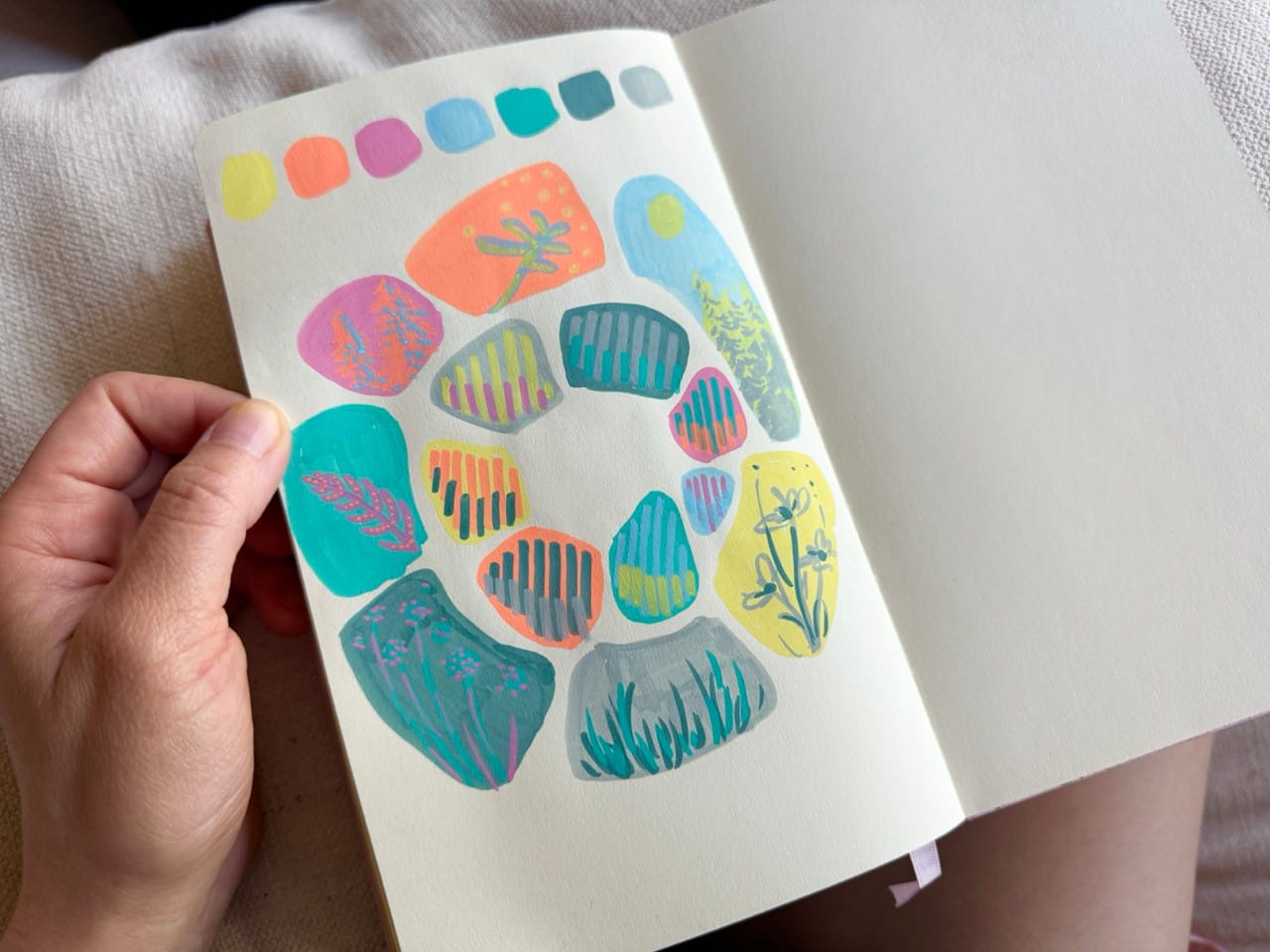
In each of the two palettes above I pulled a yellow, a red, a pink, a blue, a light and dark green, and one or two neutrals. I was making these sketches while watching artists sketch on Youtube, and had just come across a new-to-me artist, Magda @TheWildPencil, who suggested these as a set of base colors for any palette. By choosing different shades in each category she's able to put together rich and balance ranges. I made these two pages of thumbnails while watching her paint. It's cool how different the two palettes feel, even as they touch down to the same color segments.
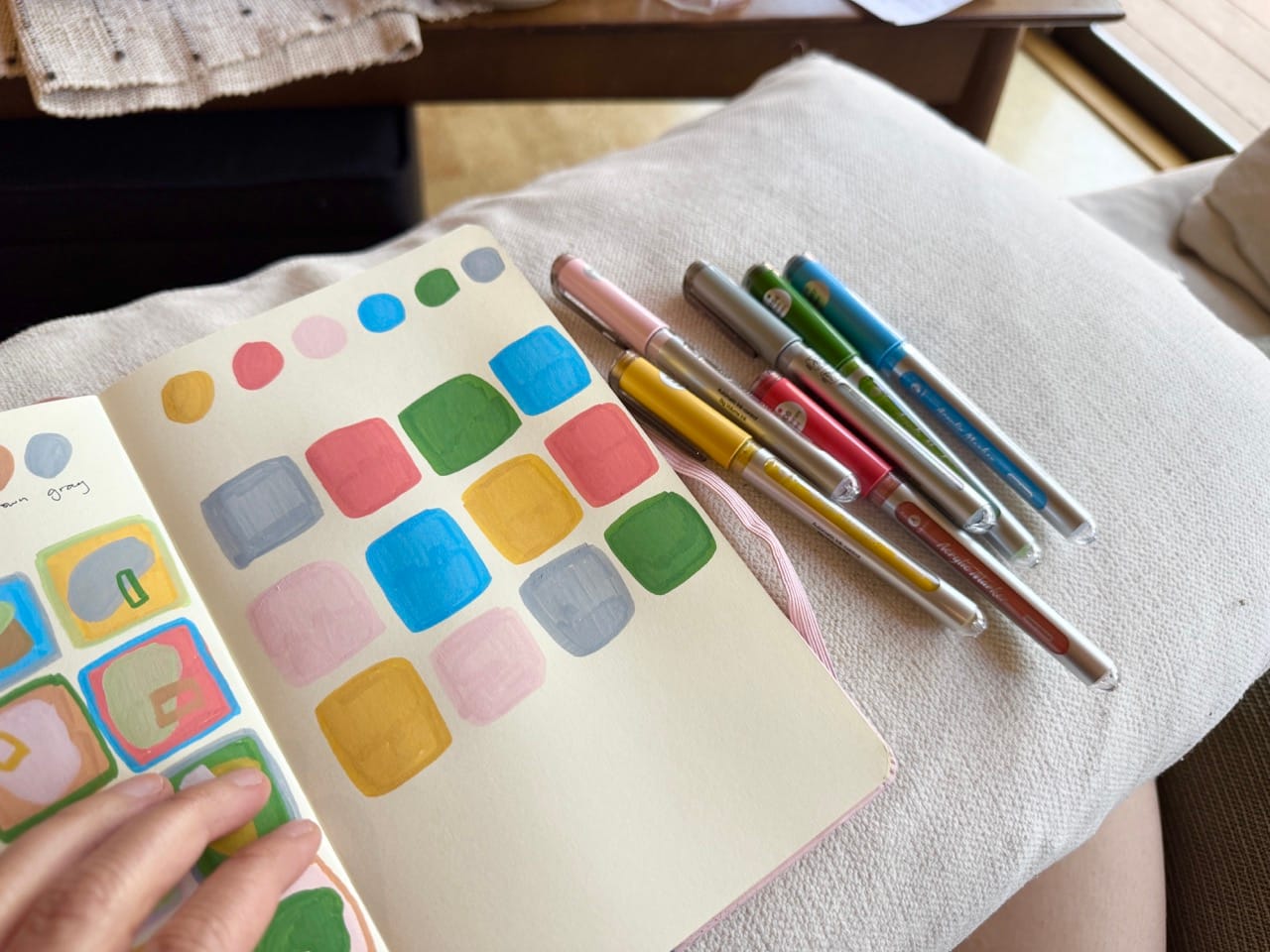
To get to know a set of colors, I like to make thumbnail sketches that try out their different combinations and ability to layer. Here's an example of how I did that with a simplified version of my first set of colors.

